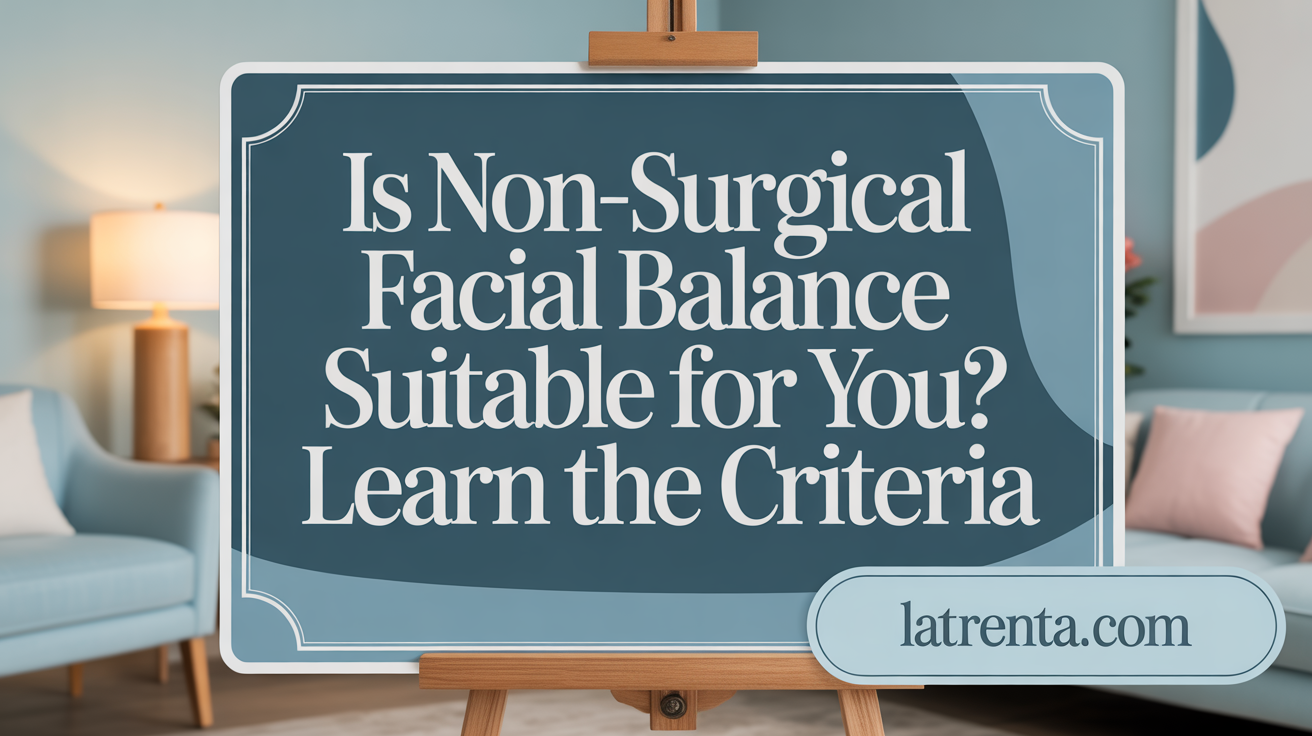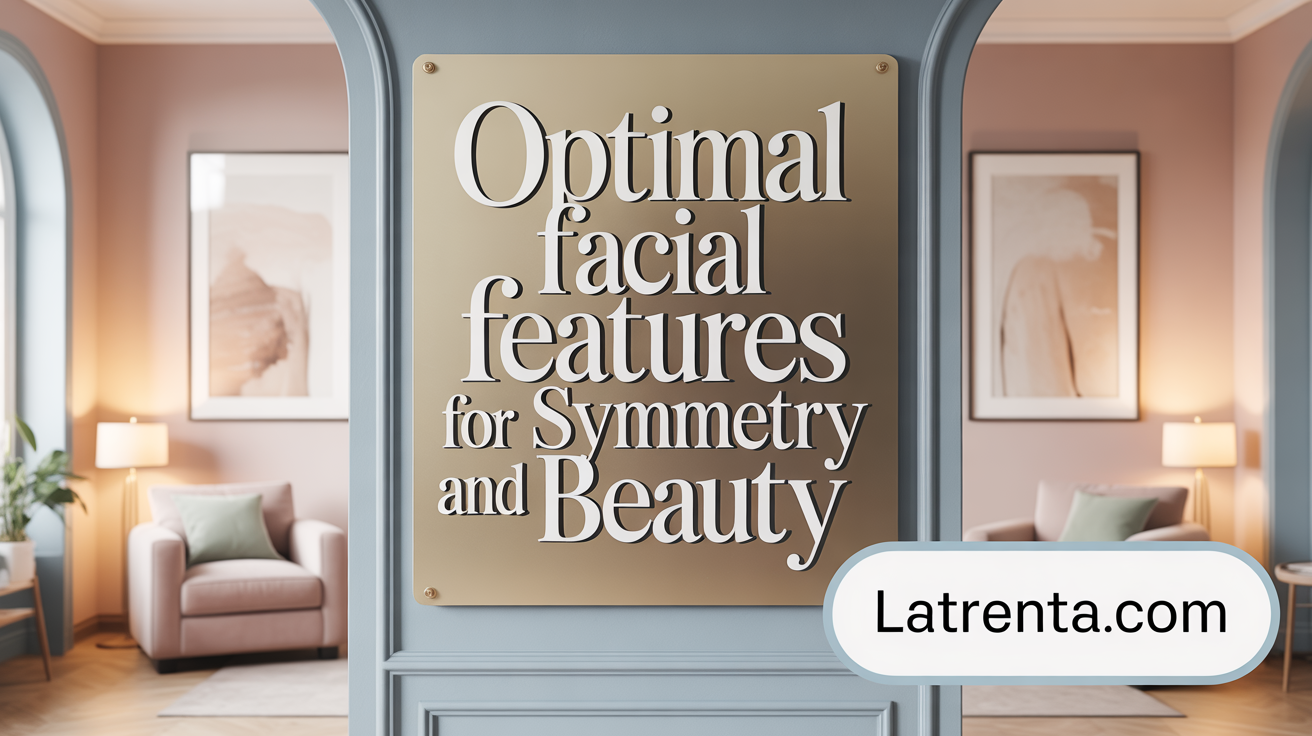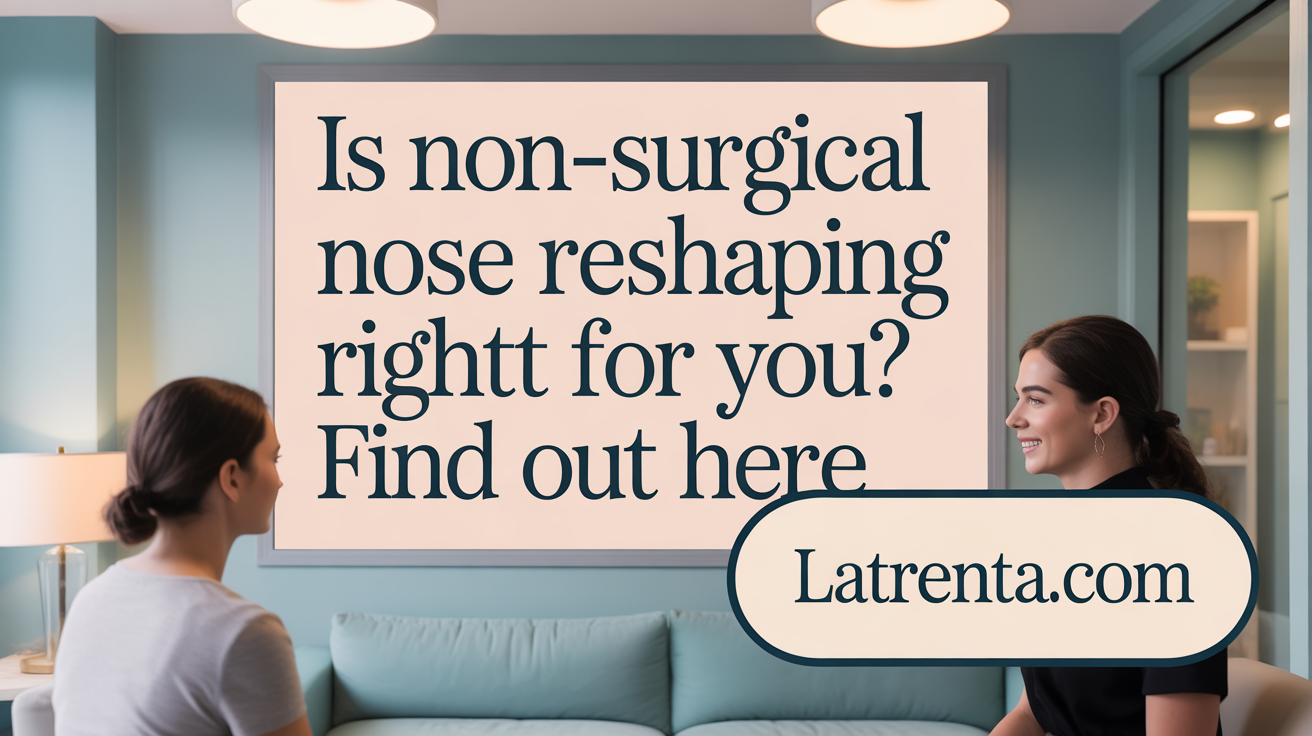Understanding the Path to Balanced Beauty
Non-surgical facial symmetry treatments have surged in popularity, offering effective ways to enhance natural beauty without the risks and downtime of surgery. From Botox and dermal fillers to liquid rhinoplasty and radiofrequency skin tightening, these minimally invasive procedures can harmonize facial features subtly and safely. But who exactly qualifies as the best candidate for these treatments? Understanding the characteristics, qualifications, and expectations that define an ideal candidate is essential for anyone considering facial symmetry correction non-surgically. This article explores the key factors and traits that influence suitability, helping you determine if non-surgical symmetry procedures are right for you.
Characteristics and Qualities of Good Candidates for Non-Surgical Facial Symmetry
What characteristics and qualities qualify someone as a good candidate for non-surgical facial symmetry procedures?
Individuals interested in improving facial symmetry through non-invasive methods typically exhibit mild to moderate asymmetries. These asymmetries might be caused by soft tissue differences, muscle imbalances, or minor skeletal variations. Such candidates often seek subtle enhancements to achieve a more balanced facial appearance without undergoing surgical procedures.
A primary consideration is having realistic expectations. Treatments like Botox, dermal fillers, or radiofrequency skin tightening offer temporary improvements, and upkeep treatments are usually needed to maintain results. Candidates should understand that these procedures aim for enhancement rather than perfection.
Most suitable candidates are adults, often over the age of 40, who have previous aesthetic treatment experience or familiarity with cosmetic procedures. These individuals usually pursue correction or rejuvenation to look refreshed without dramatic or permanent alterations.
A thorough consultation with a qualified, experienced practitioner is crucial. During this assessment, individual facial anatomy is evaluated to determine the potential benefits of treatment, ensuring a personalized approach that aligns with the patient's goals.
Candidates should be in good overall health, free from conditions that may increase risks or hinder recovery. It is recommended to avoid blood thinners, alcohol, or smoking before treatment to minimize side effects such as bruising or swelling.
Overall, suitable candidates are those looking for subtle, natural improvements and are committed to a series of maintenance treatments to sustain their enhanced appearance. Clear communication with the practitioner about desired outcomes and possible limitations is essential for achieving patient satisfaction.
Criteria and Conditions Suiting Patients for Botox, Fillers, and Non-Surgical Rhinoplasty
 Patients considering non-surgical methods such as Botox, dermal fillers, or non-surgical rhinoplasty should meet certain criteria to ensure safety and effectiveness. Generally, suitable candidates have stable facial conditions without active infections, skin conditions, or contraindications like myasthenia gravis, severe allergies, or uncontrolled health issues.
Patients considering non-surgical methods such as Botox, dermal fillers, or non-surgical rhinoplasty should meet certain criteria to ensure safety and effectiveness. Generally, suitable candidates have stable facial conditions without active infections, skin conditions, or contraindications like myasthenia gravis, severe allergies, or uncontrolled health issues.
These procedures are most appropriate for individuals with minor to moderate facial asymmetry, which often results from muscle hyperactivity or soft tissue imbalance rather than structural skeletal deformities. For example, facial misalignments caused by uneven muscle contractions or volume loss in specific areas respond well to these treatments. An accurate assessment is crucial, often involving clinician-rated scales for muscle activity, detailed photographic analysis, and a comprehensive understanding of facial anatomy.
The ideal patient is in good overall health, with realistic expectations about the outcomes. They should be seeking temporary or semi-permanent improvements without the need for surgery and should be looking for subtle enhancements that preserve natural expressions. Patients must also understand that results from non-surgical options typically last from a few months up to around 18 months, often requiring maintenance treatments.
Combination approaches, such as using Botox in conjunction with dermal fillers, are common and can provide more balanced and harmonious results. The expertise of a qualified medical professional is critical—proper dosing, precise injection techniques, and careful treatment planning ensure safe, natural-looking outcomes. This personalized approach is key to addressing individual concerns while minimizing risks.
Overall, a detailed consultation—assessing factors like muscle activity, soft tissue balance, facial structure, and patient goals—is essential in determining if a person is suitable for non-surgical facial balancing procedures.
Ideal Facial Profile Features for Achieving Symmetry with Non-Surgical Methods

What is the ideal profile or features that are desirable for achieving facial symmetry through non-surgical options?
Achieving a balanced and harmonious facial appearance often involves focusing on enhancing facial proportions rather than striving for perfect symmetry, which is rarely natural. The ideal profile for non-surgical aesthetic improvements emphasizes subtle, well-placed adjustments that promote natural harmony.
Non-surgical treatments like dermal fillers and Botox are particularly effective in addressing volume deficiencies and muscle imbalances. For example, adding volume to sunken cheeks or lips can restore youthful fullness, while relaxing overactive muscles with Botox can improve asymmetries caused by muscle dominance.
Facial proportion guidelines play a crucial role in planning these treatments. The golden ratio and facial thirds—dividing the face into equal parts from the hairline to the eyebrows, eyebrows to the bottom of the nose, and bottom of the nose to the chin—serve as visual benchmarks. Key angles and lines, such as the nasolabial fold and jawline contour, are also considered to ensure enhancements complement natural features.
A comprehensive facial analysis by a qualified specialist helps tailor interventions to each individual’s unique bone structure and soft tissue anatomy. This personalized approach ensures that treatments enhance natural features, creating subtle yet impactful improvements.
In the end, the goal is to foster a balanced, natural look rather than perfect symmetry. This approach respects each person’s unique beauty, emphasizing overall facial harmony. Whether addressing volume loss, muscle tone, or proportion, non-surgical methods can effectively refine facial contours, improving aesthetic appeal while maintaining authentic appearance.
Attributes Defining Suitability for Non-Surgical Nose Reshaping and Facial Balance Procedures
 When considering non-surgical nose reshaping, or liquid rhinoplasty, several attributes help determine if an individual is a suitable candidate. Typically, those with mild nasal imperfections, such as dorsal convexity or concavity, can benefit from this minimally invasive approach. Candidates often have minor deviations, slight asymmetries, or a drooping or bulbous nasal tip that fillers can subtly correct.
When considering non-surgical nose reshaping, or liquid rhinoplasty, several attributes help determine if an individual is a suitable candidate. Typically, those with mild nasal imperfections, such as dorsal convexity or concavity, can benefit from this minimally invasive approach. Candidates often have minor deviations, slight asymmetries, or a drooping or bulbous nasal tip that fillers can subtly correct.
It's important that patients hold realistic expectations about the results. Non-surgical procedures are designed for temporary improvements—lasting from about 6 to 12 months—so individuals seeking significant or permanent changes may need surgical rhinoplasty.
A thorough assessment of nasal anatomy is essential. This includes examining the cartilage, bone structure, and skin quality. Proper evaluation ensures that the procedure can safely address specific imperfections and achieve natural-looking results. For example, patients with complex structural deformities, severe deviations, or prominent tip irregularities are generally better suited for surgical options.
Candidates should also have clear, achievable goals aligned with the capabilities of non-surgical techniques. Those aiming for minor refinements—such as smoothing bumps or straightening a slightly crooked nose—are ideal.
Overall, suitability depends on the extent of the nasal imperfection, individual facial features, and personal aesthetic objectives. Consulting with a qualified practitioner ensures that the chosen approach matches the patient's unique anatomy and desired outcomes, optimizing safety and satisfaction.
Expectations, Benefits, and Limitations of Non-Surgical Symmetry Treatments

What expectations and potential benefits can candidates have from non-surgical facial symmetry treatments based on their characteristics?
Candidates interested in non-surgical facial symmetry treatments can often anticipate a more balanced and proportionate facial appearance that suits their individual features and aesthetic goals. These procedures primarily involve dermal fillers, neuromodulators like Botox or Dysport, and skin tightening methods, which offer immediate results that look natural. Patients usually see enhancements in facial contours, improved symmetry, and a fresher look without the need for invasive surgery.
The most appealing aspect for many is the quick turnaround; treatments often require minimal recovery time, allowing patients to return to daily activities shortly after the procedure. These options tend to be more cost-effective than surgical procedures, making them accessible while also posing lower risks such as infection or significant scarring.
Candidates who are in good health, do not smoke, and prioritize skin health are ideal. It's important for individuals to maintain realistic expectations—non-surgical methods provide subtle, adjustable improvements but are temporary. The effects can last from several months up to 18 months, necessitating maintenance treatments to preserve the results.
Since the procedures are minimally invasive, they do not involve significant discomfort, lengthy downtime, or extensive recovery, which makes them especially suitable for those seeking quick, effective aesthetic enhancements. Overall, these treatments serve as a safe, efficient approach for enhancing facial harmony and boosting confidence, with the understanding that ongoing upkeep is essential for sustained results.
Defining the Best Candidates: Qualifications, Traits, and Professional Guidance
When considering options for non-surgical facial symmetry correction, it's essential to understand who makes an ideal candidate. These procedures, including treatments like dermal fillers, Botox, and liquid rhinoplasty, are best suited for individuals seeking subtle, natural improvements rather than dramatic changes.
The most suitable candidates typically have mild to moderate facial asymmetries. They may notice differences in features such as eyebrows, eyes, cheekbones, or the overall face shape that affect their confidence. Importantly, they should understand the capabilities and limitations of non-surgical treatments, which are designed to enhance harmony rather than achieve perfect symmetry.
Good overall health is a crucial trait. Candidates should be free from active infections, skin conditions, or ongoing health issues that could interfere with healing or treatment outcomes. Maintaining realistic expectations is equally important. Treatments can effectively balance features and improve proportions but cannot eliminate all asymmetries or address significant structural concerns.
Adherence to pre- and post-treatment care instructions given by qualified professionals maximizes results and minimizes risks. For instance, avoiding blood thinners before treatment or following skincare routines afterward can significantly influence success.
A thorough consultation with an experienced specialist helps tailor the procedures to each individual’s unique anatomy and aesthetic goals. During this assessment, the practitioner evaluates facial proportions, discusses desired outcomes, and explains each treatment’s scope.
Traits associated with a higher likelihood of successful results include a positive attitude, patience for multiple sessions if needed, and a good understanding of health and aging. Candidates who accept minor natural asymmetries as part of their character tend to be more satisfied with the subtle enhancements achieved through non-invasive methods.
Ultimately, the best candidates are those motivated to improve their appearance through safe, minimally invasive treatments and who are prepared to follow professional guidance to maintain natural, harmonious facial features.
Achieving Balanced Beauty Safely and Effectively
Non-surgical facial symmetry procedures offer a versatile and accessible approach to enhancing facial harmony for those with mild to moderate asymmetries. Ideal candidates are adults in good health who seek subtle, natural improvements with realistic expectations and an understanding of the temporary nature of these treatments. Appropriate assessment by qualified professionals, individualized treatment plans, and patient commitment to care protocols are essential in achieving satisfying, safe results. By embracing their unique facial features and aiming for improved balance rather than perfection, candidates can enjoy the numerous benefits of non-surgical symmetry corrections—unlocking renewed confidence and refreshed beauty with minimal risk and downtime.
References
- Correcting Facial Asymmetry: Surgical & Non-Surgical Methods
- Perfect Profiles: 5 Procedures to Give Your Face Balance & Symmetry
- Facial Balancing - Enhance Symmetry Non-Surgically
- Facial Balancing: What Is It, and How Can Filler Help?
- Transforming Your Look: 3 Plastic Surgeries for Facial Symmetry
- What Are Facial Balancing Hyaluronic Acid Treatments
- The nonsurgical nose job: An in-depth examination of liquid ...
- Nonsurgical Facelift: What It Is, Options & Benefits - Cleveland Clinic
- Facial Optimization - Kristy Hamilton, MD, FACS
